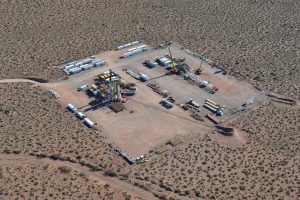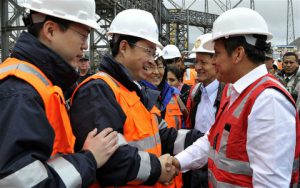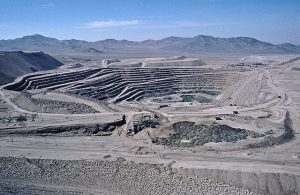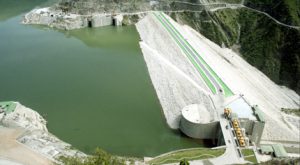The first major meeting of Chinese and Latin American leaders agreed closer co-operation on trade, investment and industry, but is more likely to usher in deals on oil and gas rather than renewable energy, analysts said in response to a summit that was big on rhetoric but short on firm detail.
China-LatAm summit ‘a missed opportunity’ on low-carbon energy
China’s declaration that investments in Latin America will more than double in the next 10 years was the most tangible outcome of a summit meeting between the president of China, Xi Jinping, and Latin American leaders in Beijing this week, although a more formal relationship is expected to evolve later this year.
"One plus one is bigger than two," Xi said at the meeting.
The summit was held through the first ministerial forum of China and the Community of Latin American and Caribbean Nations (CELAC) in Beijing on January 8-9.
Xi said that the volume of trade between the two markets would increase to around US$500 billion over the next decade as China continues to tap into Latin America’s resources of oil, gas, minerals and agricultural products and extend its political influence into a region the US has long regarded as its backyard.
For Latin American countries, closer ties with China will help speed up economic growth in the region, which has stalled amid falling commodity prices.
China’s trade with Latin America grew only 1.3% in the first 11 months of 2014 compared to the corresponding period the previous year, reaching a total of almost US$25 billion.
But on either side of the Pacific, leaders want to ramp up trade and develop stronger economic – as well as diplomatic – ties.
The two-day forum was attended by four Latin American heads of state and 20 foreign ministers from the 33 CELAC member countries, along with representatives from international organisations.
One of the main documents emerging from the summit was a five-year cooperation plan between China and CELAC in areas such as security, trade, investment, infrastructure, energy, industry, agriculture, science, technology and cultural and educational exchanges.
But with China having made a historic pledge to peak carbon emissions at the APEC Summit in November last year, some commentators were expecting the forum to provide opportunities to develop low-carbon technologies in Latin America.
While such a deal could emerge in the coming years, the signs from this week’s summit is that China remains primarily focused on Latin America’s resources of oil and gas, most of which is extracted from countries including Brazil, Colombia, Ecuador, Mexico, Peru and Venezuela.
Waning US influence
For Rhys Jenkins, an international economist at the University of East Anglia in the UK, this week’s summit won’t change the relationship very much.
"It seems to me that the figure of US$500 billion in the next decade was quite conservative given that China-Latin America trade has increased tenfold over the last decade."
Diversifying oil supplies will remain a major objective for China, while a deal also creates opportunities for Chinese construction companies in the region, Jenkins adds.
From a Chinese perspective, closer ties with Latin America have long made sense, particularly as the region’s increased economic power and left-leaning foreign policy have diluted US influence, points out Wu Guoping, Latin American expert from the Institute of Latin American affairs at the Chinese Academy of Social Sciences.
The forum also demonstrated how the nature of Chinese finance is helping to forge more intimate relationships between China and some of its Latin American counterparts.
“China is a lender with deep pockets and few conditions. Latin American and Caribbean nations occasionally favour Chinese finance over finance from other IFI’s (International Financial Institutions) because of its relative lack of conditions.” said Margaret Myers, Director of the China and Latin America Program at the inter-American Dialogue.
Climate policies secondary
With few other places to turn for credit, Venezuela’s president Nicolás Maduro secured a US$20 billion oil-backed loan whilst in Beijing, just one leg of a trip which included a stop-off in Russia and will follow on to Iran and other OPEC nations.
And while Rafael Correa, president of Ecuador, was also seeking loans from China, at the Beijing summit he called for international effort to "drive real commitments towards mitigating the climate crisis."
Inter-American Dialogue’s Myers said such pronouncements are contradicted by Correa’s willingness to co-operate with China and other countries to exploit oil and gas reserves in Ecuador’s forested areas that are among the most environmentally sensitive on the planet.
The failure to ink meaningful deals on low-carbon energy may mark a missed opportunity in the aftermath of UN-led climate negotiations in Lima, said Guy Edwards, Co-Director of the Climate and Development Lab at Brown University.
“It appears that climate, environmental and low-carbon development issues didn’t feature very strongly in Beijing and we can see how disconnected the climate change debate is from decision-makers at this summit,” he said.
Interior designs
Meanwhile, Amazonian and Andean regions most at risk from deforestation and pollution could become increasingly vulnerable if China delivers on calls from some South American countries to increase development of the continent’s interior.
In an opinion piece published on Chinese media over the weekend, Chile’s ambassador to Beijing, Jorge Heine, said one major motivation of closer co-operation is to draw upon Chinese finance to fund development beyond coastal areas.
"The vast spaces of South America need to be inter-connected, and the Atlantic and Pacific coasts linked up to each other. Much as in China, it is the coastal areas that have seen most economic development, with the interior being left behind. Chinese technology, be it in railways, in construction, in telecom or in energy, can do much to overcome this," Heine wrote in China Daily.







